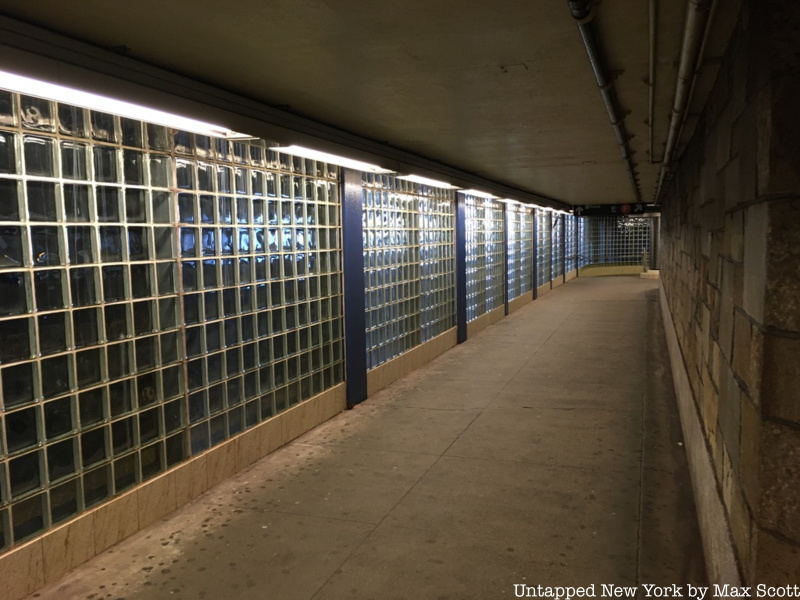6. The IND Queens Boulevard Express has a unique glass brick tunnel

On December 30th, 1936, the IND Queens Boulevard express was extended to Kew Gardens from its previous terminus in Jackson Heights. The opening of the new subway cut commute times into Midtown down to only half an hour and spurred massive real estate development along Queens Boulevard. Property values soared, with lots that would have sold for $1,200 selling for upwards of $10,000. The real estate boom occurring in Kew Gardens even prompted some developers to laud Queens Boulevard as the “Park Avenue of Queens.”
One of the legacies of this fast-paced development is Kew Gardens’ large concentration of five- and six-story elevator apartment buildings that were typical of the late 1930s and early 1940s in New York. These buildings were designed both for the car and for pedestrians. Many buildings were built along a walkable, urban street grid, but they also include driveways that are hilariously narrow for modern cars.
In fact, even the Queens Boulevard subway was as much an infrastructure project for cars as it was for trains. One place where this dual-purpose infrastructure is shown off in a 1940s style is in the pedestrian tunnel under Queens Boulevard. This tunnel allows for easy underground access to the subway without having to cross the busy intersection at Queens Boulevard and Union Turnpike. But because the Jackie Robinson Parkway dives under that massive intersection as well, the pedestrian and car tunnels run parallel and are connected by a wall of glass bricks, which reached their height of popularity in the 1930s.





